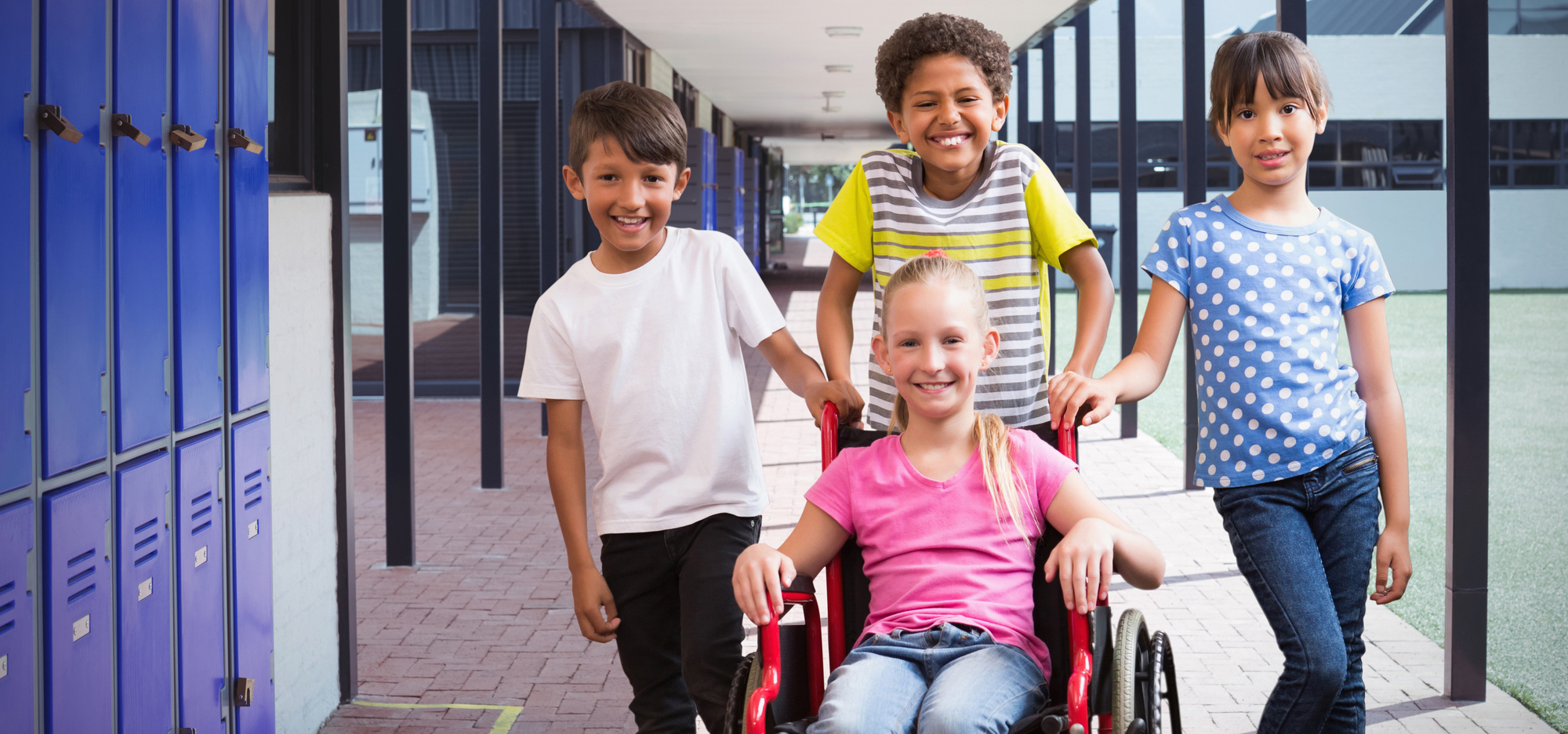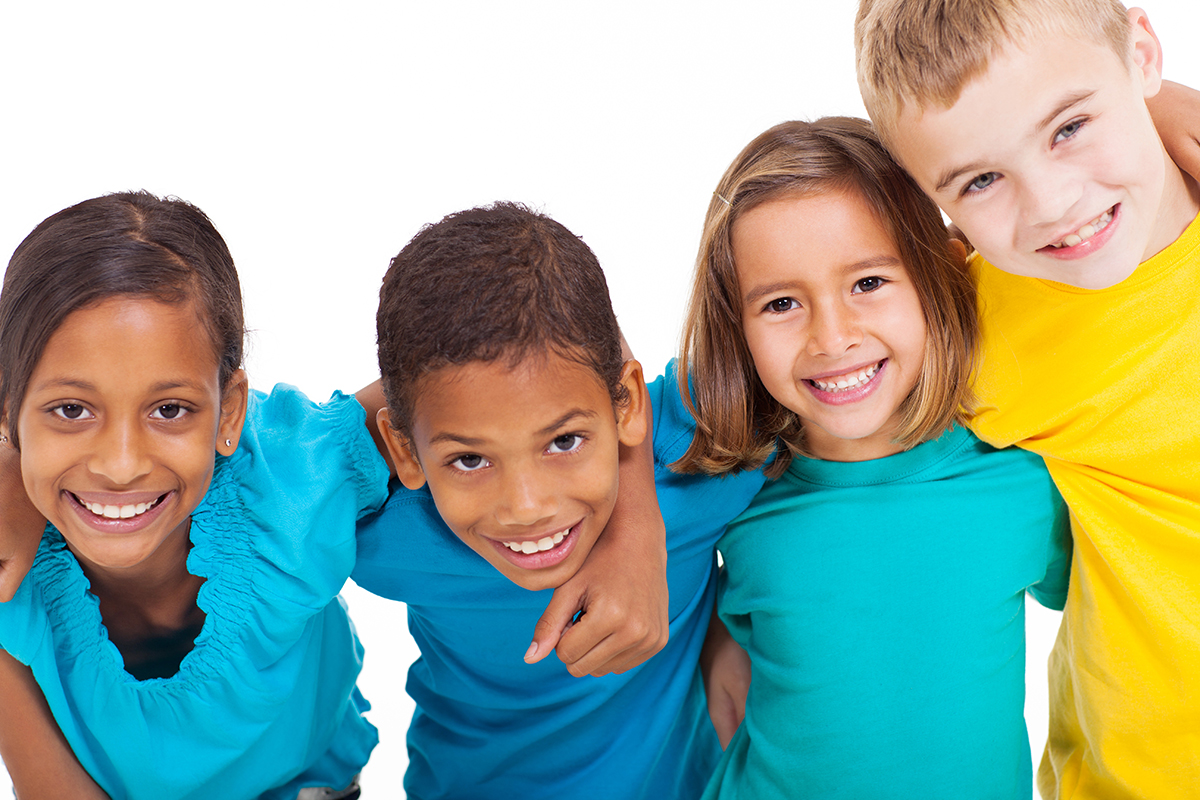
Celebrating Differences: Five lessons for teaching kids acceptance
Chris Corsi – Health Educator
As a children’s health educator who uses a wheelchair, students frequently ask me lots of questions about my disability. It’s their way of acknowledging and valuing me. Plus they simply want to know more. From the typical “Why do you have a wheelchair?” to the more thoughtful “How do you drive? Can you push the pedals?”, the volume of questions can feel as though I spend as much time teaching about myself as I do health topics.
Children’s curiosity knows no bounds. By answering my students’ questions, I hope to help them see people with disabilities as more whole people. However, sometimes the questions portray falsehoods that kids may have already begun to internalize. For example, some questions imply that disabled people are sad or unable to do things for themselves.
This issue extends beyond disability. Children often have questions when they encounter people they see as different from themselves, be that difference based on ability, race, gender, sexual orientation, appearance, or origin. This is perfectly natural, and it creates an opportunity to engage kids in important conversations. While sometimes these conversations seem tough, it’s an important opportunity to help kids actively choose to be inclusive of people who (at first!) seem unlike them.
Tips on how to teach youth to accept, respect, and value differences:
1) Challenge the idea of “normal.”
Generally, people are treated differently because they’re seen as “the other.” For children, anything outside of “normal” may seem undesirable. It’s helpful to challenge the idea of “normal” to see past differences. All of us are born unique with different likes and preferences, so there is no one way to be “normal.”
Child: “That person sounds so weird! Why is that?”
Adult: “Well, they have an accent. They might be from somewhere else. That doesn’t make them weird – just different, and different isn’t bad.”
Teaching children to see similarities is important, but the goal is not to eliminate our differences. By acknowledging differences and similarities simultaneously, kids will find they can learn from people who aren’t like them. Studies show that ignoring differences actually makes discrimination worse. This article from The Atlantic delves deep into the research behind implicit bias and how to break it down.
2) Teach children to not be afraid to ask hard questions. Don’t shy away from hard answers.
It can be embarrassing to hear your child ask questions about “different” people, but questions often come from a place of innocent curiosity. It’s best to be as honest as possible, and it’s okay to say “I don’t know.” Scholastic advises “children often interpret a lack of response to mean that it’s not acceptable to talk about differences. If you’re unsure about what to say, try: ‘I need to think about your question and talk to you later.’ Or, you can always go back to a child and say: ‘Yesterday you asked me a question… Let’s talk about it.’” By answering honestly, you create opportunities for more conversations about differences which also shows your child that it’s okay to ask respectful questions.
3) Cultivate empathy and community.
It can be hard for kids to see themselves in people who are different, which is why it’s important to encourage children to empathize and help them get to know people unlike themselves. Review your child’s media and related influences. Does it include diverse individuals and oppose cultural stereotypes? When kids see “different” people in a positive light, they are better prepared to challenge harmful stereotypes. It’s helpful to encourage children to make friends who aren’t like them. According to contact theory, one of the best ways to improve intergroup relations is simply interpersonal contact. Getting to know people different from oneself leads to reduced prejudice and increased understanding.

4) Know your child is listening.
Is may seem easier to shield children from challenging issues, such as racism, bigotry, or oppression. But the reality is children will be confronted with these issues through the media, in day-to-day conversations, or with their peers. Generally, young people are able to recognize when somebody is being treated differently. Seize the moment to model empathy and make it clear that it’s unacceptable to use slurs, to use identity as an insult, or to treat somebody worse because they are different.
Be thoughtful about your own words, too. Young people mirror what they hear.
5) Understand intent.
While adults may understand using nuanced language in reference to groups of people, children may not yet have the language or skill set to do so. “Generally, children want to know why people are different, what this means, and how those differences relate to them. Remember that children’s questions and comments are a way for them to gather information about aspects of their identity and usually do not stem from bias or prejudice,” writes Scholastic. If a child says something potentially offensive, it probably isn’t intended to be harmful. It’s best to correct the underlying misconceptions behind their statement or engage them in a conversation about how their words could hurt feelings.
These are just a few ways to begin teaching young people how to accept and value others for their difference. For many, the process may need to begin with challenging your own biases. Ultimately, the goal is to create a more tolerant and compassionate culture for current and future generations.
Resources:
Here are some other articles that may offer some additional assistance in addressing issues of difference with children:
Teaching Diversity: A Place to Begin by Scholastic
6 Ways to Teach Your Kids About Disabilities
Tips for Talking to Kids About Gender and Sexual Orientation
How To Talk About Diversity With Your Kids
Sometimes You’re A Caterpillar – Educational video targeted to middle-school students about diversity
References:
https://www.scholastic.com/teachers/articles/teaching-content/teaching-diversity-place-begin-0/
http://www.apa.org/monitor/nov01/contact.aspx
https://www.theatlantic.com/science/archive/2017/05/unconscious-bias-training/525405/
Featured Poe Program: The Alphabet of Bullying
Grade Level: 6th – 8th
Program Length: Four 60-minute sessions
Sessions Include:
Each session involves exercises, activities, and deliberate reflection. Students are challenged to “dig deep” into themselves and overcome real and perceived pressures in order to do the right thing. Each session includes reflection time with journaling responses to thought-provoking prompts, and there is a pledge at the end of all of the sessions, describing what is expected of those who have been through the program. Learn more.

